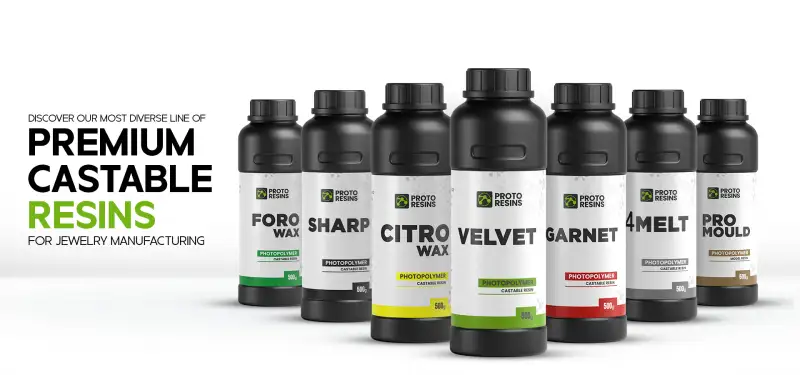NAVIGATING RESIN SELECTION FOR YOUR 3D PRINTER: WHAT YOU NEED TO KNOW?
WHAT IS RESIN?
Resin, in its natural and synthetic forms, is an incredibly adaptable substance essential in many fields. Resin's versatility and usefulness make it important in many areas, from cutting-edge 3D printing to complex arts and crafts projects to strong industrial manufacturing processes.
Epoxy Resin, Polyester Resin, UV Resin, and Acrylic Resin are some types of resin.
Resin has several uses in a variety of industries. Stereolithography (SLA) and digital light processing (DLP) are two methods used in 3D printing to create intricate things out of a liquid photopolymer that solidifies when exposed to laser or UV light. UV resin is the optimal choice for creating jewelry and small items due to its rapid curing time. Epoxy resins are robust coatings and adhesives that are moisture- and chemical-resistant and long-lasting.
Resin is used in art to create glossy paint finishes and to encase items in transparent resin. It is used in manufacturing to create robust parts for the automotive and aerospace sectors, as well as composite materials like fiberglass.
ROLE OF RESIN IN 3D PRINTING
When precision and detail are more important than robustness or longevity, 3D resin printing functions well. Many engineering applications cannot handle the brittleness of things made from resin. Rapid prototyping was the first application for resin printing. Designers can rapidly investigate fit and function, refine their design, and print a new object by utilizing resin printing, which produces dimensionally accurate parts at a faster pace than sculpting.
In particular, resin's distinctive characteristics make it essential for the production of precise, detailed, and high-quality 3D prints. Some of the primary reasons why resin is necessary for 3D printing include:
• Precision and Detail: Resin enables the capture of intricate features and fine details with exceptional accuracy, enabling high-resolution printing.
• Smooth Surface Finish: The photopolymerization process results in a smooth, glass-like surface on printed objects, eliminating the rough textures that are prevalent in other 3D printing methods.
• Complex Geometries: Resin can cure in extremely thin layers, making it possible to create intricate patterns and geometries that would be difficult to accomplish with other materials.
• Rapid Curing: When the resin is exposed to light, it sets very quickly. This speeds up the printing process and makes it more efficient overall.
• Variety of Properties: Resins come in a wide range of qualities, enabling customization according to the needs of the printed product. Some resins are more flexible, while others are more durable or transparent.
HOW IS RESIN BY PROTOSPEED DIFFERENT?
Protospeed is among the leading manufacturers of quality cast-able resins and fast 3D printers for the jewelry industry. Protospeed’s Cast-able resins are manufactured in-house. With significant R&D, Protospeed has created a wide resin range to meet the needs of the dental and jewelry industries. One of their most famous products is a high-speed resin that delivers sharp edges, a smooth outer layer, and fine details.
SHARP
Sharp, as its name implies, is the most accurate resin, providing incredibly fine detail and precision. It prints finely detailed designs with precise and clear details and casts like wax with ease. Its low viscosity makes high production throughput and quick printing possible. Sharp resin ensures smooth castings and is perfect for lighter designs and delicate filigree because it doesn't require post-cure and leaves no ash after burnout.
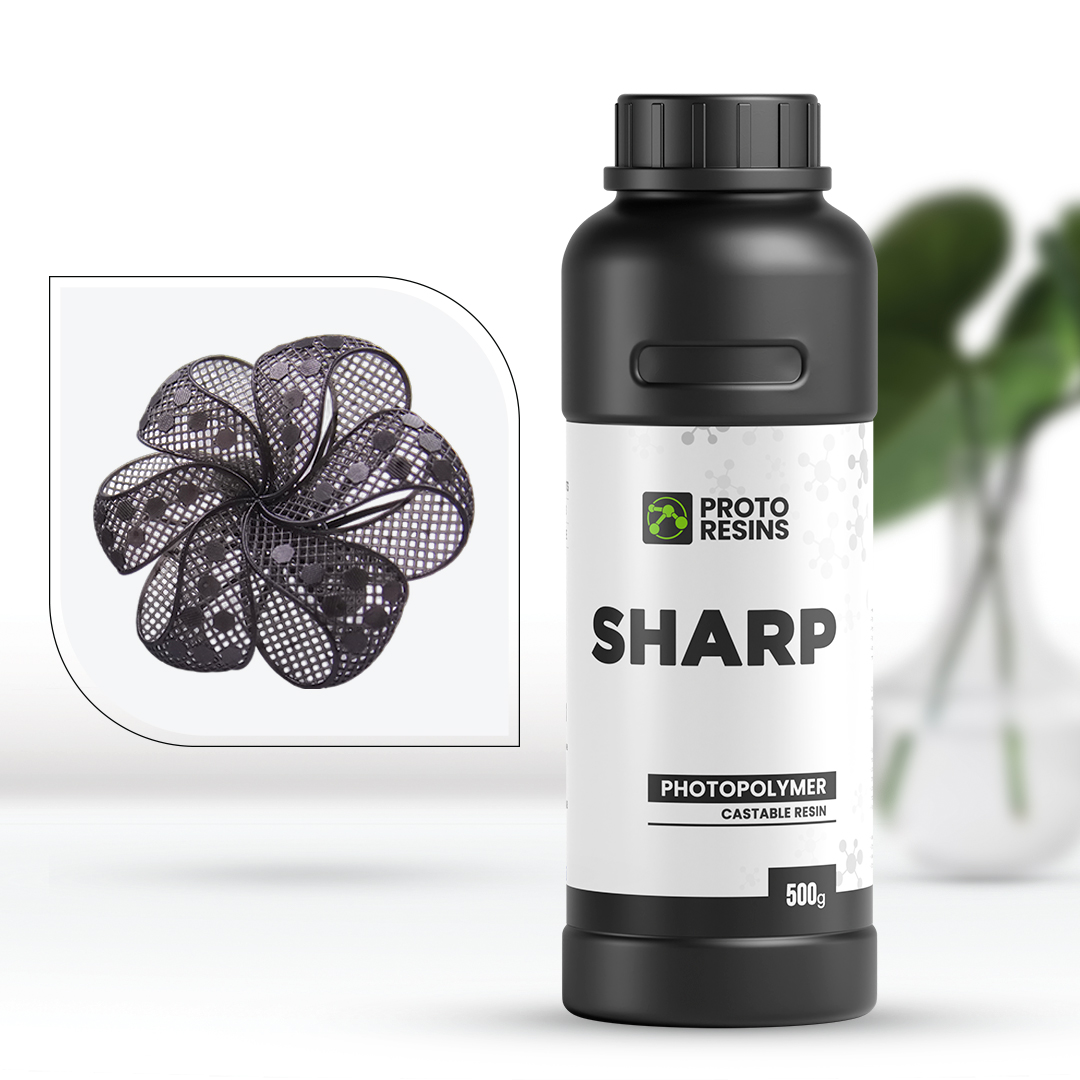
FOROWAX
Forowax is a resin that has been meticulously formulated to achieve an optimal equilibrium for a diverse array of designs, including intricate filigree and surface-based designs. Made with polymers that have a lot of wax in them, this special resin is great for making things that need to be very precise and have a better finish.
It guarantees faultless casting results, leaving no ash behind after burnout, and compels no post-curing. Forowax's adaptability renders it ideal for both intricate filigree and smooth surface designs, ensuring that each print is of exceptional quality and consistency.
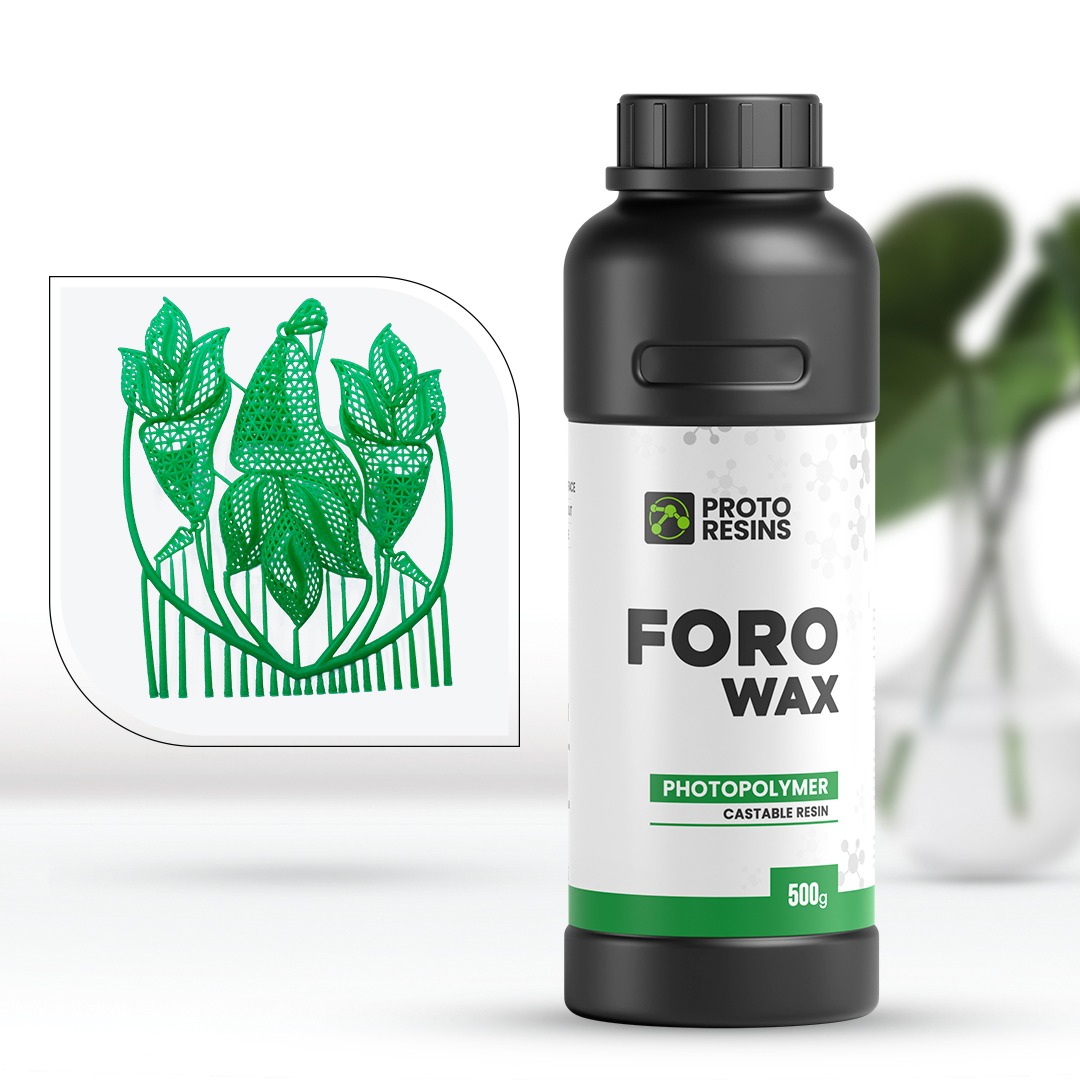
VELVET
Velvet is the ultimate in sophisticated cast-able resins created especially for jewelry production. Easily integrating with both DLP and LCD 3D printers, this high-performance resin offers unmatched detail and remarkable surface smoothness. Velvet is unique because of its exceptional adaptability and consistency, which Protospeed developed via extensive research and innovation.
It produces immaculate, ash-free burnout across a variety of investment burnout procedures. With its improved casting results and no requirement for post-curing, velvet is an invaluable tool for improving your manufacturing process. With Velvet, you can embrace the cast-able resins of the future and achieve unprecedented casting results.
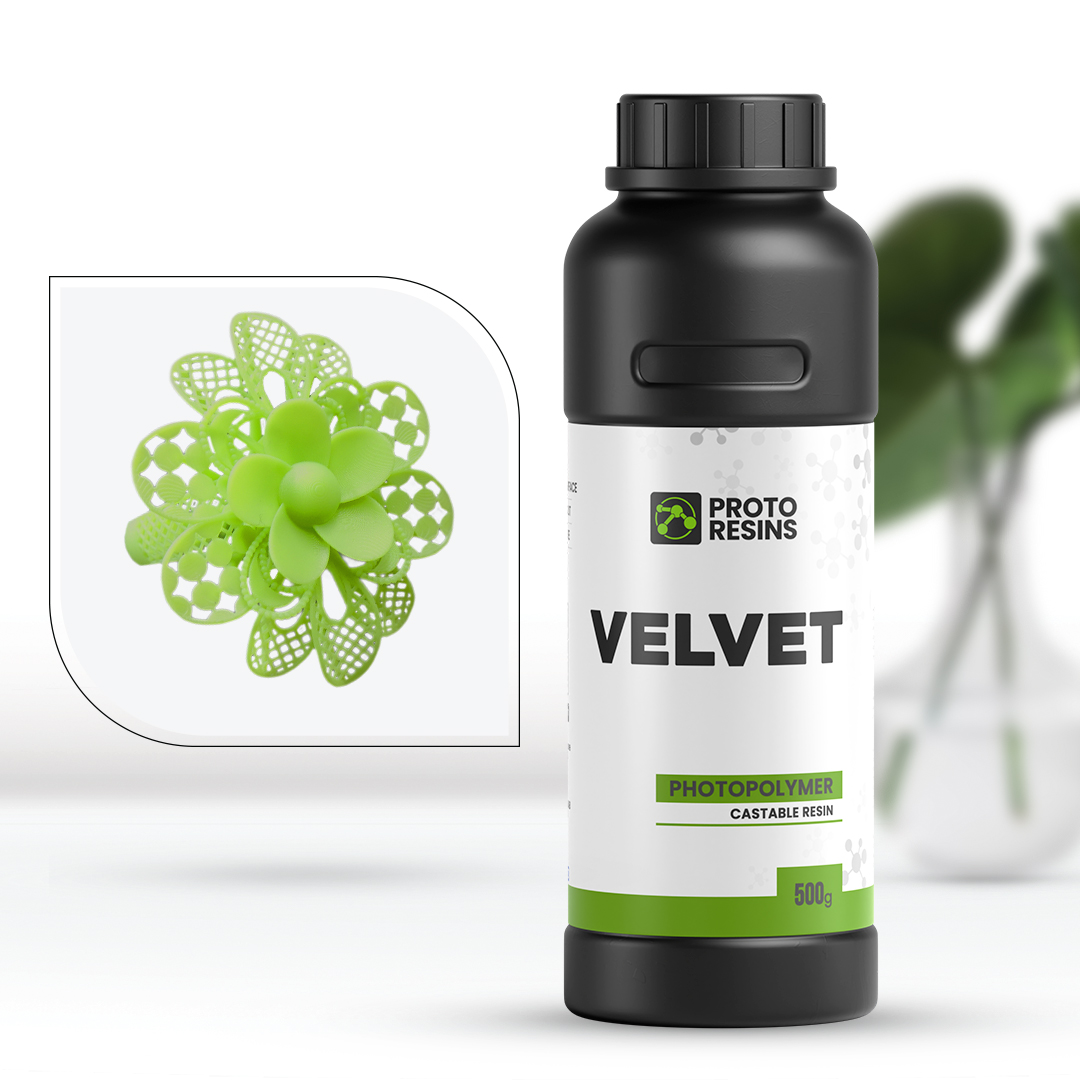
GARNET
Garnet, a cast-able resin especially created for jewelry purposes beyond gem-setting, is uncommon. When used in combination with a suitable 3D printer, it produces exceptionally exact details and produces prints of high quality. Its distinctive chemical structure and quick sublimation produce neat and reliable burnouts. It is therefore a great option for both internal and external casting operations. Additionally, garnet is made to work with a wide variety of gypsum-bonded investments, guaranteeing smoother and cleaner surfaces on the finished product.
All types of jewelry, including intricate gem settings, are appropriate for garnet due to its versatility. Its lack of post-curing necessitates a streamlined production process and increased productivity. Furthermore, enhancing its appeal to jewelry makers who demand accuracy and superior quality in their work, the resin guarantees shrinkage-free casting outcomes.
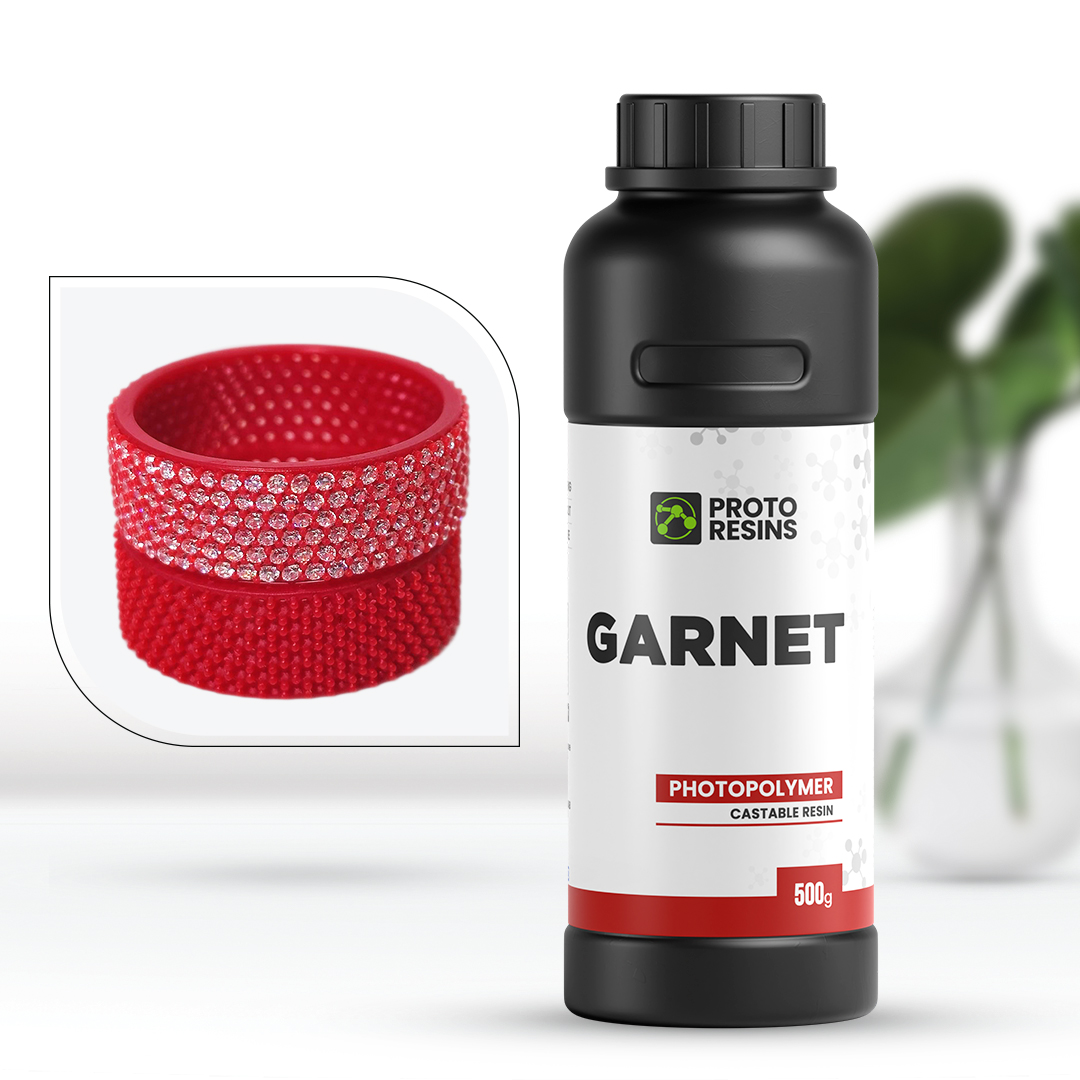
4MELT
The best option for workshops ranging from entry-level operations to high-production settings is 4MELT Castable Resin. This resin is ideal for casting thick gauge men's rings and other sturdy jewelry designs. Its wax-like melting qualities make casting easy and effective, guaranteeing the perfect rendering of even the most complex and thick designs.
When it comes to creating precise and long-lasting designs, 4MELT is an excellent choice. Its ability to melt quickly cuts down production time by a large amount, allowing for faster turnarounds without lowering quality. The resin is particularly well known for producing smooth castings, giving completed goods a polished and professional look. Furthermore, 4MELT guarantees that there won't be any shrinking throughout the casting procedure, preserving the precision and integrity of your designs.
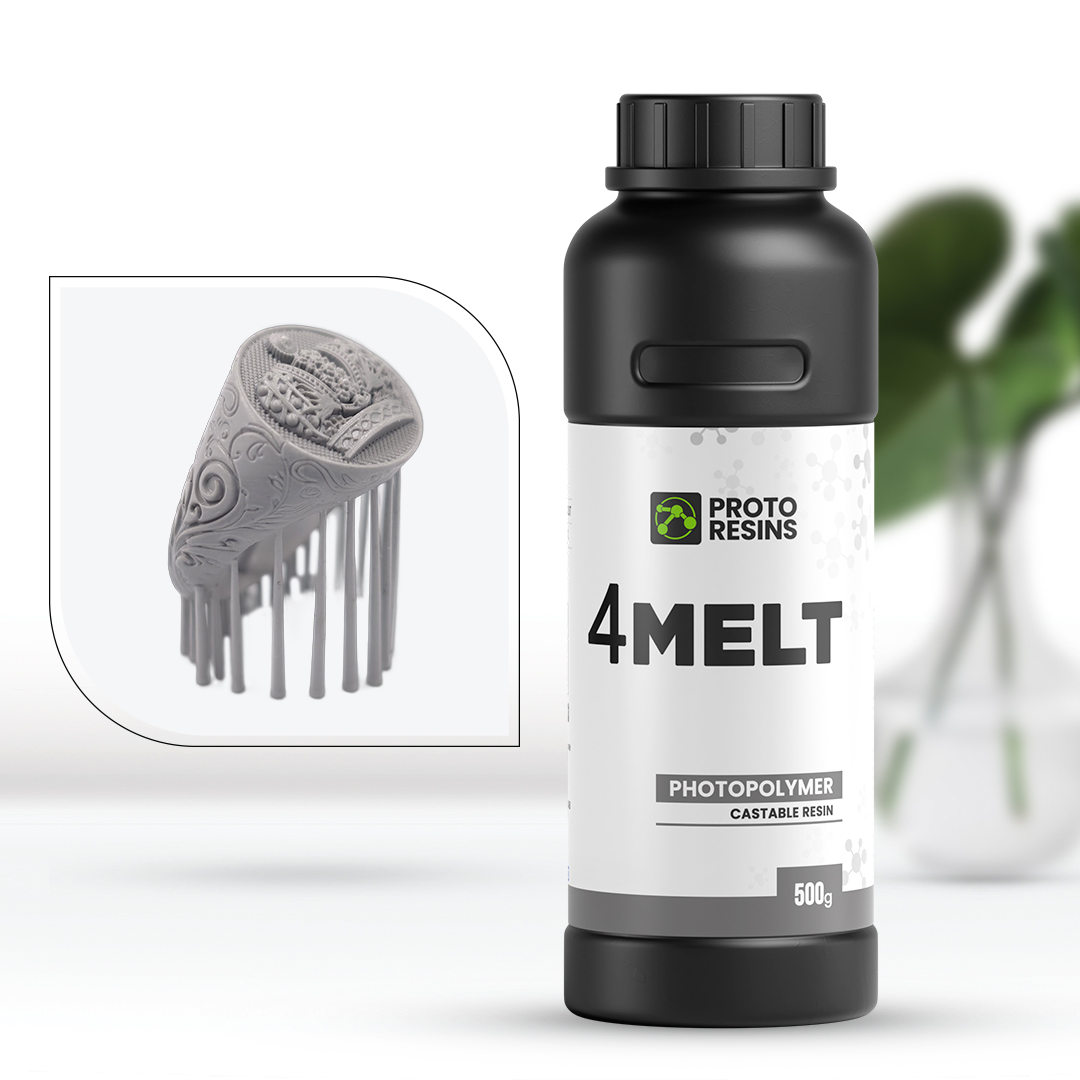
PROMOULD
ProMould is acknowledged as the most accurate Model RTV Resin on the market, created especially to provide unmatched intricacy and accuracy in the jewelry-making process. This resin is perfect for a variety of applications because it works perfectly with silicone and classic rubber molds. ProMould's ability to seamlessly integrate into wax injection-based jewelry manufacturing workflows is one of its main advantages; it offers considerable time and cost reductions while maintaining remarkable precision.
ProMould is designed to be incredibly precise, guaranteeing that every last element of your design is captured with incredible precision. It is a vital tool for manufacturers and jewelers looking to increase production capacity without sacrificing precision or intricacy.
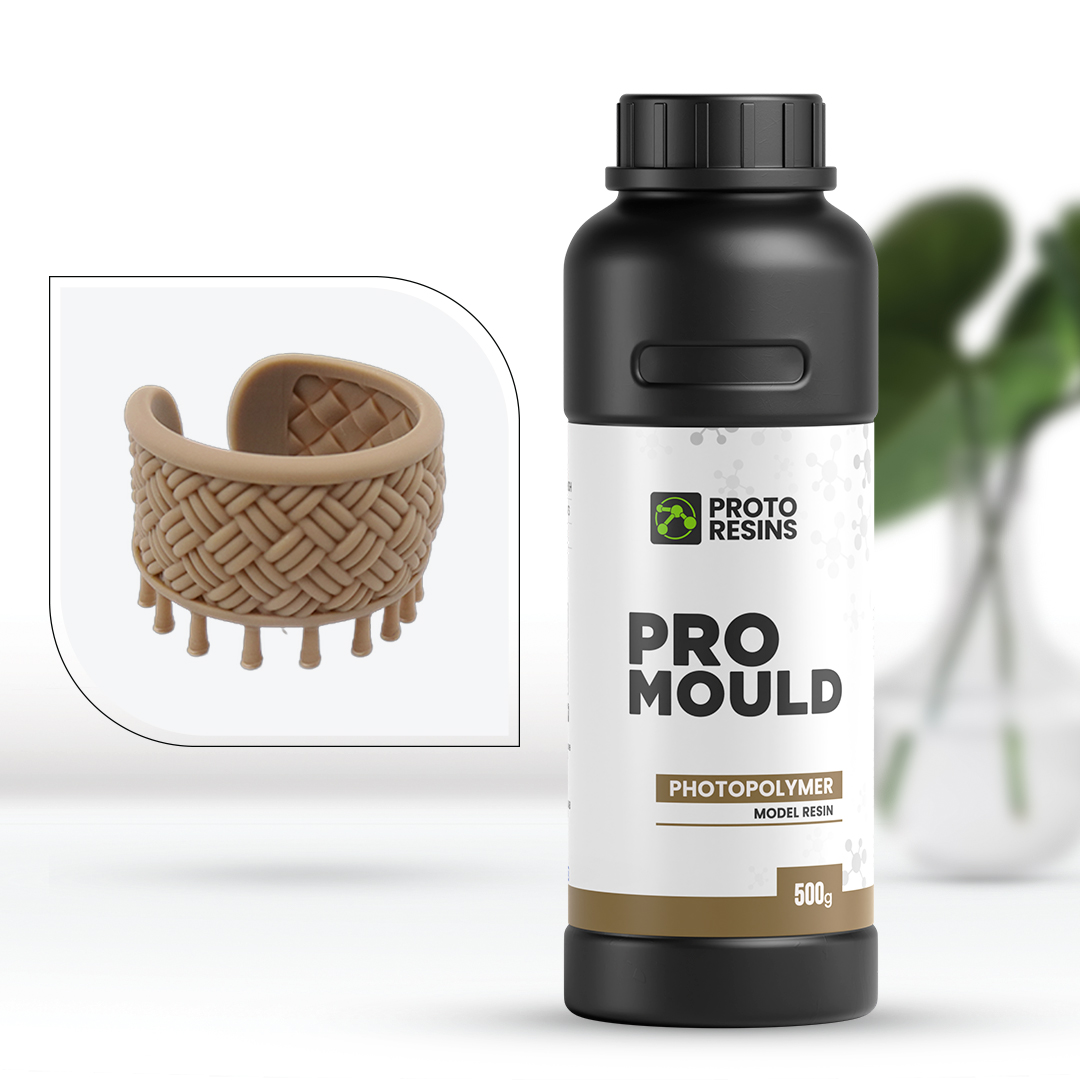
IMPORTANT CONSIDERATIONS WHEN CHOOSING A RESIN FOR A 3D PRINTER
1. Comprehend Your Project Requirements
Determine the kind of things you'll be printing and the mechanical attributes needed to identify the needs of your project.
2. Understand Resin Types
Learn about the many types of resins, including dental, tough, flexible, high-detail, castable, and standard resins, so that you can match them to the needs of your project.
3. Evaluate Printer Adaptability
Verify that the resin is compatible with the technology in your 3D printer and that the exposure parameters may be changed appropriately.
4. Examine the Printing Environment
Consider the printing environment; if ventilation is a problem, use low-odor or environmentally friendly resins; also, make sure the resin works well in the ambient conditions of your workspace.
5. Assess Post-Processing Requirements
Examine each resin's cleaning ease and curing time to see whether it fits within your post-processing capabilities.
6. Evaluate the Cost-Benefit Ratio
Analyze the cost-effectiveness by minimizing material waste and matching the resin's performance to pricing.
7. Evaluate and Retest
Learn which resin works best for your 3D printing projects by doing small-batch tests and experimenting with different parameters.
Selecting the appropriate resin for your 3D printer is a crucial step in attaining the most optimal outcomes for your projects. Your 3D prints can be of the best quality if you know exactly what you need, research various resin kinds, and carefully consider variables like printer compatibility, environmental conditions, and post-processing requirements.
The accuracy and quality of your finished goods will be enhanced if you take the time to make an informed decision, regardless of your level of experience with 3D printing. With professional advice and premium supplies, Protospeed and ProtoResins can help you succeed in your 3D printing endeavors at every stage.

